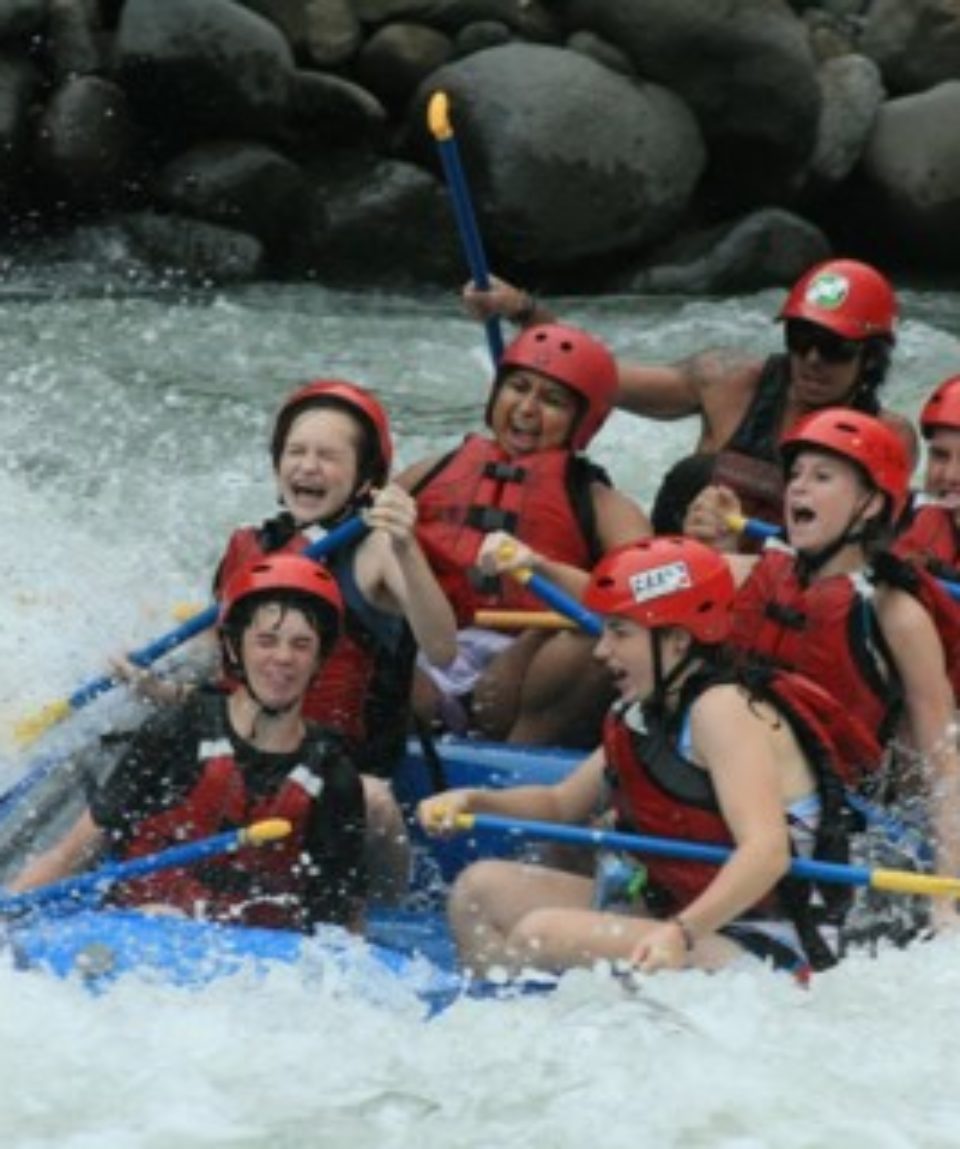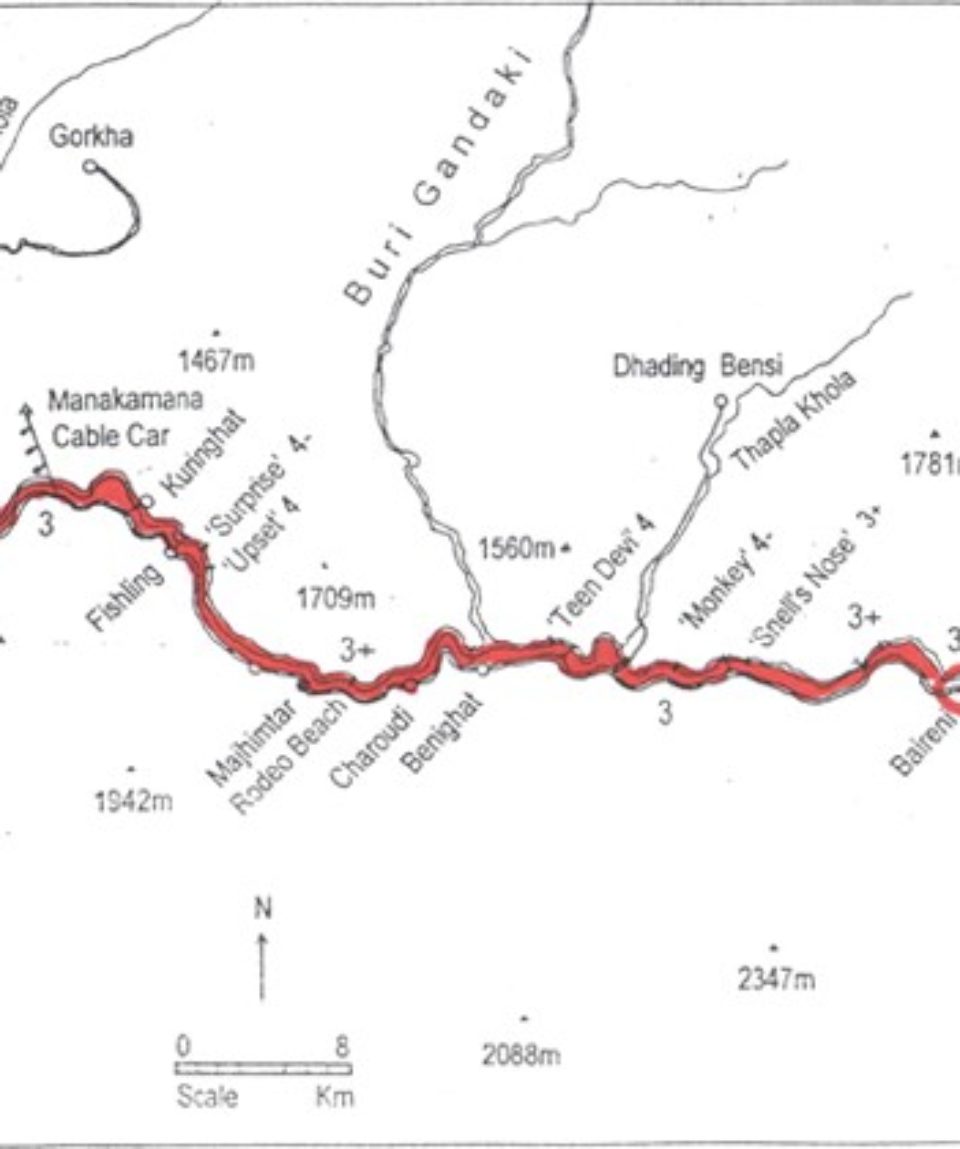07:00 Hrs Met by representatives and board the waiting vehicle and drive for about 2 hours to Baireni (52 kms), a booming village located in close proximity to the Trishuli river. The Trishuli River is named after the mythological and symbolic weapon “TRISHUL” (Trident) of Lord Shiva. The River originates in the Himalayas flowing through the southern plains of Nepal, joins the Narayani River and enters India to mingle with the Ganges and ultimately ending in the Bay of Bengal. The total rafting stretch is a distance of 88 Kilometers and the guests can schedule their trip from 1 – 4 days. The Trishuli is a splendid river for white water rafting with excellent rapids including technical ones and picturesque scenery with fantastic rock formations. Typical villages, their people attired in multi fashioned clothing and engaged in their daily works on terraced rice fields can be observed from the river. Native and migrant birds are in abundance for keen bird lovers. Rafting in the Trishuli is very convenient as the put in points are accessible by road and has become the most popular among all the rivers of Nepal. Upon arrival at Baireni, the raft put in point, change into suitable attire while the rafts are inflated and the gears loaded. After providing each participant with a technical know-how to maneuver the rafts, safety measures and a few notable helmet and life jacket, the guests are briefed by the group leader about the The raft trip begins in a languid pleasurable fashion to get the feel of the motion on the raft and also for the practice to row in unison (for paddle rafters) and obey commands in cohesion. The river scenery unfolds and the scenario is exhilarating. Immediately run a small technical rapid and with a mad rush of adrenaline we conquer this rapid and our fears and apprehension. Most of the rapids have been given Nepali names and our guides can relate the story behind each one. After about an hour, the “Snell’s nose” (2+) looms ahead and is one of the bigger rapids that we will experience on this stretch. Stop to scout/study the rapid, as it is a technical one. The first half we enter the hole and then get churned around in an eddie creating waves of varying magnitude and pushes us to the huge rock face. The river guides are best judged by their ability to maneuver through this technical rapid. Photographs can be taken in turns if there are more than one raft. After having conquered our major rapid, we raft down the Trishuli river challenging the rapids such as Monkey (2+), Malekhu Rapids and others and then gently float down to the Makehu Blue heaven restaurant for a much deserved rest and a late lunch. After lunch, we board the waiting vehicles for the 3 ½ hour drive to Kathmandu. (Note : It is customary for the locals to stop at the Malekhu Bazaar and sample the delicious fried fish which this place is famous.



